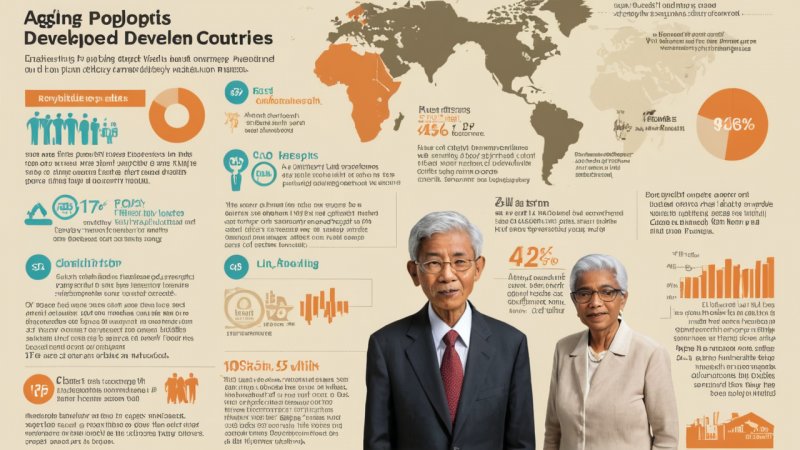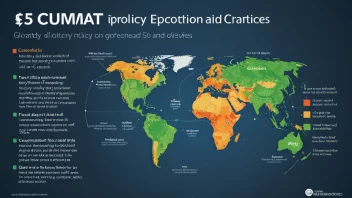The phenomenon of aging populations is a pressing issue that has significant economic implications worldwide. As life expectancy increases and birth rates decline, many countries are grappling with the challenges and opportunities presented by an older demographic. This article will compare the economic implications of aging populations in developed countries, such as Japan and Germany, with those in developing nations like India and Nigeria. By examining the distinct challenges and strategies employed by these different regions, we can gain a clearer understanding of how aging affects economies across the globe.
Demographic Trends
Understanding demographic trends is crucial to grasping the economic implications of aging populations. Developed countries are experiencing a pronounced increase in the proportion of elderly citizens. For instance, in Japan, over 28% of the population is aged 65 or older, making it one of the oldest societies globally. In contrast, developing nations, such as India, have a younger population profile, with only about 6% of its citizens aged 65 and above. This fundamental difference sets the stage for various economic challenges and opportunities.
Challenges in Developed Countries
In developed nations, the aging population poses several economic challenges:
- Labor Shortages: As the workforce shrinks due to retirements, industries may face labor shortages, leading to decreased productivity.
- Increased Healthcare Costs: A higher proportion of elderly individuals leads to rising healthcare expenditures, straining public health systems.
- Pension Sustainability: With more retirees than workers contributing to pension systems, the sustainability of these programs is at risk.
Opportunities in Developed Countries
Despite these challenges, there are also opportunities:
- Innovation in Healthcare: The demand for healthcare services has spurred innovation in medical technology and services.
- Experience in Workforce: Older workers bring valuable experience and knowledge that can enhance productivity.
- Market for Senior Services: A growing elderly population creates a significant market for products and services tailored to seniors.
Challenges in Developing Countries
In contrast, developing countries face different challenges related to aging populations:
- Insufficient Healthcare Infrastructure: Many developing nations lack the healthcare infrastructure needed to support an aging population, leading to inadequate care.
- Poverty Among Seniors: A higher incidence of poverty among the elderly can exacerbate economic disparities.
- Limited Pension Systems: Fewer developed pension systems mean many older adults may rely on family support or informal economies.
Opportunities in Developing Countries
However, there are also unique opportunities for developing nations:
- Demographic Dividend: While the elderly population is increasing, younger populations can still drive economic growth if adequately educated and employed.
- Global Partnerships: Developing countries can benefit from international partnerships and investments aimed at improving healthcare and infrastructure for the elderly.
- Innovative Solutions: The challenges of aging populations can spur innovation in low-cost healthcare solutions and community-based support systems.
Policy Responses
Both developed and developing countries are implementing various policy responses to address the economic implications of aging populations:
Developed Countries
In developed nations, policies often focus on:
- Extending Retirement Age: Many countries are raising the retirement age to keep older individuals in the workforce longer.
- Healthcare Reforms: Implementing reforms to control healthcare costs and improve efficiency.
- Pension Reforms: Adjusting pension systems to ensure sustainability, such as increasing contributions or reducing benefits.
Developing Countries
In developing nations, the focus is more on:
- Building Healthcare Infrastructure: Investing in healthcare facilities and services to support the elderly.
- Social Safety Nets: Establishing social safety nets to protect vulnerable elderly populations from poverty.
- Education and Employment: Focusing on education and job creation for younger populations to harness their potential.
Conclusion
In summary, the economic implications of aging populations present both challenges and opportunities that vary significantly between developed and developing countries. While developed nations grapple with labor shortages and rising healthcare costs, they also benefit from innovation and a wealth of experience among older workers. Conversely, developing countries face the daunting task of building adequate infrastructure and support systems for their aging populations, but they also have the potential to leverage their younger demographics for economic growth. Policymakers in both contexts must adopt tailored strategies that address their unique demographic realities to ensure sustainable economic development in the face of aging populations.






